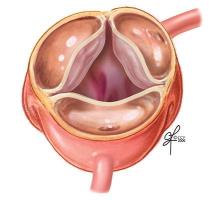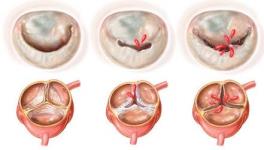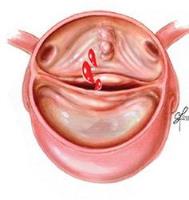What is bicuspid aortic valve disease?

Bicuspid Aortic Valve Disease, or BAVD, is when your aortic valve has two flaps (leaflets) instead of the normal three. Leaflets control the flow of blood through the valve.

Normal valve - 3 leaflets
- Opens wide and closes tightly.
- Blood flow is normal.
Bicuspid valve - 2 leaflets
- Valve does not work perfectly.
- Blood may flow backwards.
What causes BAVD?
The exact cause of BAVD is not known. We do know:
- 2x more common in men than in women.
- 2% of Americans have BAVD.
- BAVD develops in early stages of pregnancy.
What are the symptoms of valve disease?
- Short of breath.
- Heart palpitations (skipping or fluttering).
- Chest pain or pressure.
- Swollen ankles, feet or belly.
- Fast weight gain.
- Tired.
- Weak or dizzy.
Many people do not have symptoms until they are adults. Some never have symptoms. This is why you should be checked for BAVD early in life if you have a family member with BAVD.
How do I know if I have bicuspid aortic valve disease?

- Your doctor may hear abnormal heart sounds (heart murmur).
- An echocardiogram (echo) shows aortic valve problems, such as regurgitation or stenosis.
- Many patients with BAVD also have aorta problems.

Regurgitation - Leaky valves let blood move backwards.
Stenosis - Stiff, narrow valves make it hard for blood to move through them.
What can I do if I have bicuspid aortic valve disease?
There are different ways to manage BAVD.
- See your doctor for regular visits.
- Take medicine as instructed by your doctor.
- Make lifestyle changes: Stop smoking, eat healthy and exercise, etc.
- You may need a valve repair or new valve.
- Family members should have an echo to check for BAVD.
30% of patients with BAVD have complications. 80% of patients with BAVD need surgery.